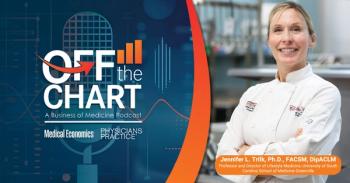
PAs Offer Comprehensive Care to Growing Geriatric Population
With the geriatric patient population increasing, physicians can count on PAs to take a hands-on approach to managing their care.
According to the U.S. Census Bureau, the number of patients 65 and older will almost double by 2050. Maine, where I practice, currently has the 14th highest proportion of the elderly nationwide and is expected to have the second highest percentage of population 65 and older by 2030.
That may be striking, but no matter where you practice medicine, the senior population and their need for high quality, healthcare services are growing.
Geriatric medicine is multi-faceted due to the complexity of chronic health conditions, frailty, dementia, and serious illnesses leading to frequent hospitalizations and changing psychosocial conditions. Thus, geriatrics requires a team-based approach to practice, including not only the medical providers but also the family and caregivers. Close monitoring and regular follow-up with older adults and their family members are essential, especially after recent hospitalizations, so as to prevent readmission. Geriatric patients need and deserve clear and compassionate communication, coordination, and teamwork. Certified PAs can be the primary-care providers for this patient population in the diagnosis and management of their specific needs.
I became a PA to be on the front lines of medicine, providing better access to care to underserved patients. After graduation, I joined a comprehensive geriatric practice, currently staffed by eight board-certified geriatric physicians, six certified PAs, and three nurse practitioners. I work in the outpatient arm of our practice, with patients residing in local long-term care and skilled care facilities.
As a PA managing patients in the sub-acute and long-term care settings, I can frequently visit to reduce re-hospitalizations, address polypharmacy, and support patients in their goals of care. It is not unusual to see patients taking 20 medications, many which had been prescribed decades ago. Addressing the issues these patients face can be challenging, but here are some steps that certified PAs can take to improve a geriatric patient's quality of life.
• Prior to recommending or ordering tests, work-ups or new medications, take a moment to weigh the benefit and risks. Reflect on what is necessary, what the patient needs to improve the quality of life and take the time to talk with the patient and those actively engaged in their care.
• Schedule annual appointments dedicated to medication review. Consider how long they have been taking each medication, drug interactions, dosage, and current indications for continued use. This type of care is often overlooked but essential to reduce traumatic falls and hospitalizations due to medication interactions and side effects.
•Consider specific medications in the following areas:
- Diabetes management. Tight glycemic control in the older patient with type 2 diabetes mellitus can contribute to frequent hypoglycemia leading to falls and can lead to lower mortality. For many older adults, avoid hemoglobin A1c levels of <7.5%.
- Insomnia & anxiety: Many older patients have been taking benzodiazepines for years. However, anxiolytics can lead to over sedation, delirium and increased risk of falls, motor vehicle accidents, and hospitalizations. Tapering off benzodiazepines completely or using the lowest dose possible will minimize these complications. If medication is necessary for insomnia, consider low dose melatonin instead of a benzodiazepine or other sedative hypnotics.
- Dementia treatment: Antipsychotics are sometimes used for the dementia patient who is agitated, resistant to care, or exhibits disruptive behaviors. However, they do present risks of over-sedation, increased falls, and even death. Focusing on why the patient is exhibiting these behaviors is key to tailoring a treatment plan. Is an infection developing or have there been changes in medication, sleep patterns or the environment? Attempt to influence behavior change by modifying the environment, educating support staff, and evaluating pain management. Antipsychotics are used when all other pharmacologic solutions haven't worked or if the patient is a danger to self or others.
- Discuss and review goals of care when a patient intersects with the medical system. Clearly documenting and clarifying patient wishes for medical interventions with the patient and family will reduce unnecessary tests and aggressive interventions. Be proactive and initiate open conversations with the patients, family, and caregivers. Ask them about their goals of care. Do they have a grasp on their prognosis? What can't they live without? Do they want aggressive work-ups or want to stay out of the hospital and if so, do they want palliative or hospice care?
With demands on physicians' time increasing, caring for our nation's geriatric patients is one the most critical areas for PAs and NPs. It's also one well-suited to the team approach to healthcare leading to more efficient use of physicians, improved outcomes, and a better quality of life for patients and families.
Charity Maniates, MSPA, MPH, PA-C, has been certified for four years by the National Commission on Certification of Physician Assistants. She is employed by Maine Medical Partners Geriatrics, part of Maine Medical Center in Portland. Prior to that, she worked in public health for 10 years, focused on community-based efforts to improve health outcomes in rural and urban underserved areas.
Newsletter
Optimize your practice with the Physicians Practice newsletter, offering management pearls, leadership tips, and business strategies tailored for practice administrators and physicians of any specialty.









